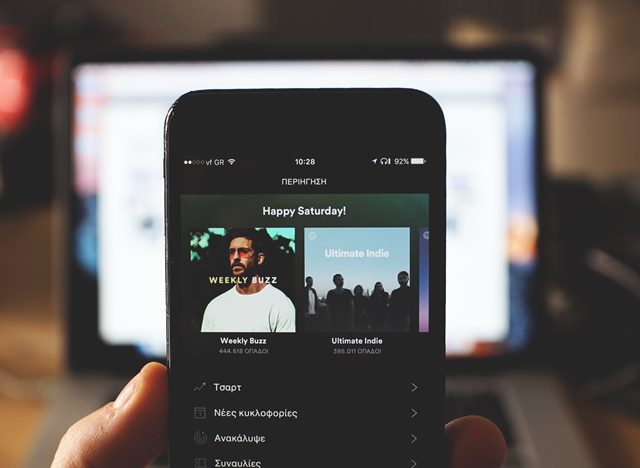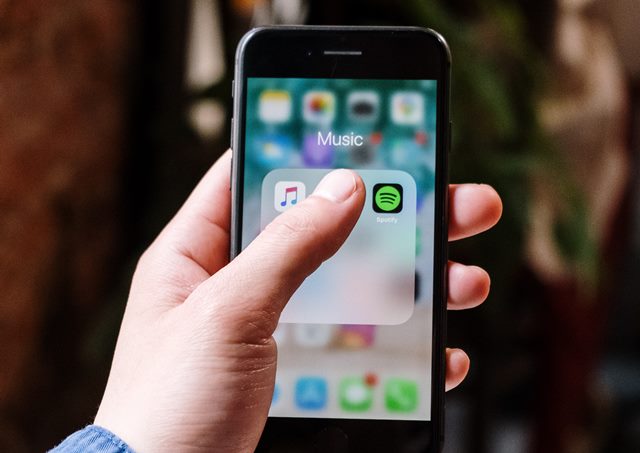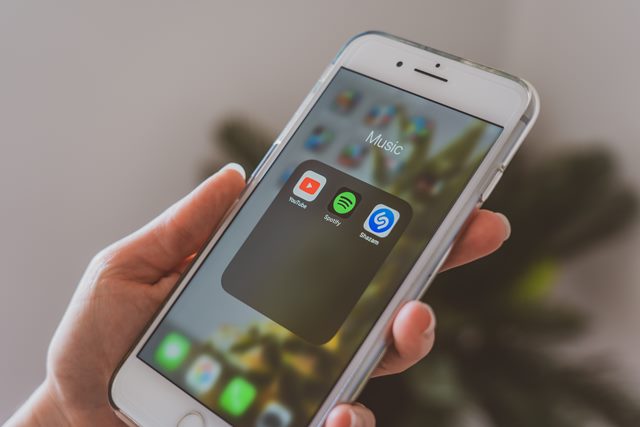Last Updated on April 6, 2023
In the digital age, distributing your music has never been easier. With the rise of digital service providers, such as Spotify and Apple Music, artists can now reach a global audience from the comfort of their own homes. However, with so many platforms available, it can be overwhelming to know where to start.
This is why in this guide, we’ll break down the process of distributing your song to digital service providers, so you can get your music out there and heard by as many people as possible.
Whether you’re a seasoned musician or just starting, this guide will help you easily navigate the world of digital music distribution. So let’s get started and get your music out there!

Steps to Distribute Your Song to Digital Service Providers
Here are steps to follow to get your music on DSPs:
Prepare Your Music for Distribution to Digital Service Providers
When distributing your music, it’s important to ensure that your audio files and metadata are in top-notch shape.
Here, we’ll take a look at how to prepare your music for distribution so that it’s ready for release to your fans:
Finalize Your Audio Files
This means you have completed all of your music production’s recording, mixing, and mastering stages. You should have a final version of your audio files that you are happy with, and that accurately represents your artistic vision.

Choose the Right Audio Format
Next, you need to choose the right audio format for your music. The most common audio format for digital music distribution is MP3. But other formats, such as WAV and FLAC, are also acceptable.
Each format has its advantages and disadvantages, so it’s essential to choose the one that best suits your needs.
MP3 is the most widely supported format compatible with almost all digital devices. It’s also a smaller file size, making it quicker to upload and download. However, the sound quality is lower than in other formats.
WAV and FLAC are both lossless formats, meaning they offer higher sound quality than MP3. However, they are also larger in file size, making them slower to upload and download. WAV is the more widely supported of the two formats, but FLAC is becoming increasingly popular.
Optimize Your Metadata
Finally, you need to optimize your metadata to ensure that digital service providers correctly identify and categorize your music. Metadata is the information that describes your music, such as the title, artist name, album name, track number, and genre.
Ensure your metadata is accurate and consistent across all your audio files. This will help to avoid any confusion or duplication among digital service providers.
Use a standardized naming convention for your audio files, such as “artist name_track title.mp3”, to make it easier for users to find your music.
In addition to the metadata, you can include other information such as lyrics, album artwork, and credits. This can help enhance your fans’ listening experience and give them more context about your music.
Read: The Rise of Streaming Services and Their Impacts on the Music Industry
Choose Your Preferred Digital Distribution Service
Choosing the right digital distribution service is important in getting your music out to your fans. With so many services available, it can be overwhelming to know where to start.
Take a look at how to choose a digital distribution service that best fits your needs:

Research and Compare Different Services
Some popular services include TuneCore, DistroKid, CD Baby, and Ditto Music. Each service has its pricing, features, and terms of service, so try as much as possible to compare them carefully.
Consider the Pricing and Features of Each Service
Most services charge a fee for each release, ranging from a few dollars to several hundred dollars, depending on the service and the level of features included.
Some services offer additional features, such as music promotion, royalty collection, and artist development. You should be willing to consider which features are important to you and which ones are worth the extra cost.
Choose a Service that Best Fits Your Needs
Once you have researched and compared different services, it’s time to choose a service that best fits your needs.
Consider your goals, your budget, and your level of experience as an artist. Some services may be better suited for independent artists just starting, while others may be more appropriate for established musicians with a larger fan base.
It’s also important to consider the level of support and customer service offered by the service. Look for a service that offers responsive and helpful support, as this can be invaluable if you run into any issues with your release.
Create an Account and Upload Your Music
Here’s how to create an account on digital service providers and upload your music:

Creating an Account
The first step in the process is creating an account with your chosen digital distribution service. To do this, visit the service’s website and follow the sign-up instructions. You will typically need to provide some basic information, such as your name, email address, and billing information.
Uploading Your Music
Once you have created an account, it’s time to upload your music. Most digital distribution services will have a specific process for uploading music, which typically involves the following steps:
- Select the release type
- Enter the release information
- Upload your audio files
- Enter the release date
- Review and submit your release
It’s important to note that the process of uploading music can vary slightly between different digital distribution services. Be sure to read the instructions carefully and follow the guidelines provided by the service.
Submit Your Music to Digital Service Providers
After you have created an account, uploaded your music, and reviewed and confirmed your release, the final step in the digital distribution process is distributing your music to digital service providers.
Choose Your Distribution Options
This includes selecting the digital service providers that you want to distribute your music to, as well as choosing any additional options that may be available, such as pricing, territories, and promotional tools.
Depending on the digital distribution service that you are using, you may have the option to distribute your music to a wide range of digital service providers, including major platforms like Spotify, Apple Music, and Amazon Music, as well as smaller niche platforms and regional providers.
Submit Your Release for Distribution
Once you have chosen your distribution options, the next step is to submit your release for distribution. This typically involves completing a form or clicking a button to initiate the distribution process.
Monitor Your Distribution and Sales Data
Once your music is distributed to digital service providers, it’s important to monitor your distribution and sales data. This includes tracking your sales and streaming data, monitoring user feedback or reviews, and updating your release information or distribution options as needed.
Read: How to Build a Music Record Label
Promote Your Music
The work doesn’t end after uploading your song for distribution. You need to promote your craft and get it in people’s playlists.
Here are some tips to help you out:

Build a Strong Online Presence
This includes creating a website or social media profile where fans can find and follow you and posting regular updates and engaging with your audience.
Optimizing your online presence for search engines and social media algorithms is also a good idea. You can achieve this by using relevant keywords, hashtags, and metadata to help your music appear in search results and recommendation algorithms.
Collaborate with Other Artists
Collaborating with other artists is a great way to expand your audience and reach new fans. This can include collaborating on a song or album, performing live together, or simply sharing each other’s music on social media and other platforms.
Play Live Shows and Tours
Playing live shows and tours is a great way to promote your music and connect with your fans in person. This can include performing at local venues, and festivals, and touring nationally or internationally.
Use Paid Advertising
Paid advertising can effectively promote your music and reach new fans, especially when combined with other promotional strategies. This can include using social media ads, display ads, and other paid promotion methods to target specific demographics and audiences.
Monitor Your Release
You want to keep track of how your song is performing. This can point to the music people like best and where you can improve.
Track Your Sales and Streaming Data
This includes tracking your revenue, streams, downloads, and other metrics across all digital service providers you have distributed your music.
Many digital distribution services offer tools and resources to help you track your sales and streaming data, including detailed analytics dashboards and reports that allow you to see how your music is performing over time.
Monitor User Feedback and Reviews
In addition to tracking your sales and streaming data, monitoring user feedback and reviews is important. This includes reading user comments, reviews, and ratings on digital service provider platforms and monitoring social media and other online platforms for mentions of your music.
By tracking user feedback and reviews, you can identify areas for improvement and make adjustments to your music, marketing, and distribution strategies as needed.
You can also engage with your fans and build a stronger connection with your audience by responding to feedback and showing that you value their opinions.
Update Your Release Information and Distribution Options
Finally, you should consider regularly updating your release information and distribution options as needed. This includes updating your metadata, artwork, and other release information to ensure your music is accurately represented across all digital service providers.
It also includes updating your distribution options, such as pricing, territories, and promotional tools, to ensure that you maximize your earning potential and reach as many listeners as possible.
Before you go…
Hey, thank you for reading this blog to the end. I hope it was helpful. Let me tell you a little bit about Nicholas Idoko Technologies. We help businesses and companies build an online presence by developing web, mobile, desktop, and blockchain applications.
We also help aspiring software developers and programmers learn the skills they need to have a successful career. Take your first step to becoming a programming boss by joining our Learn To Code academy today!










